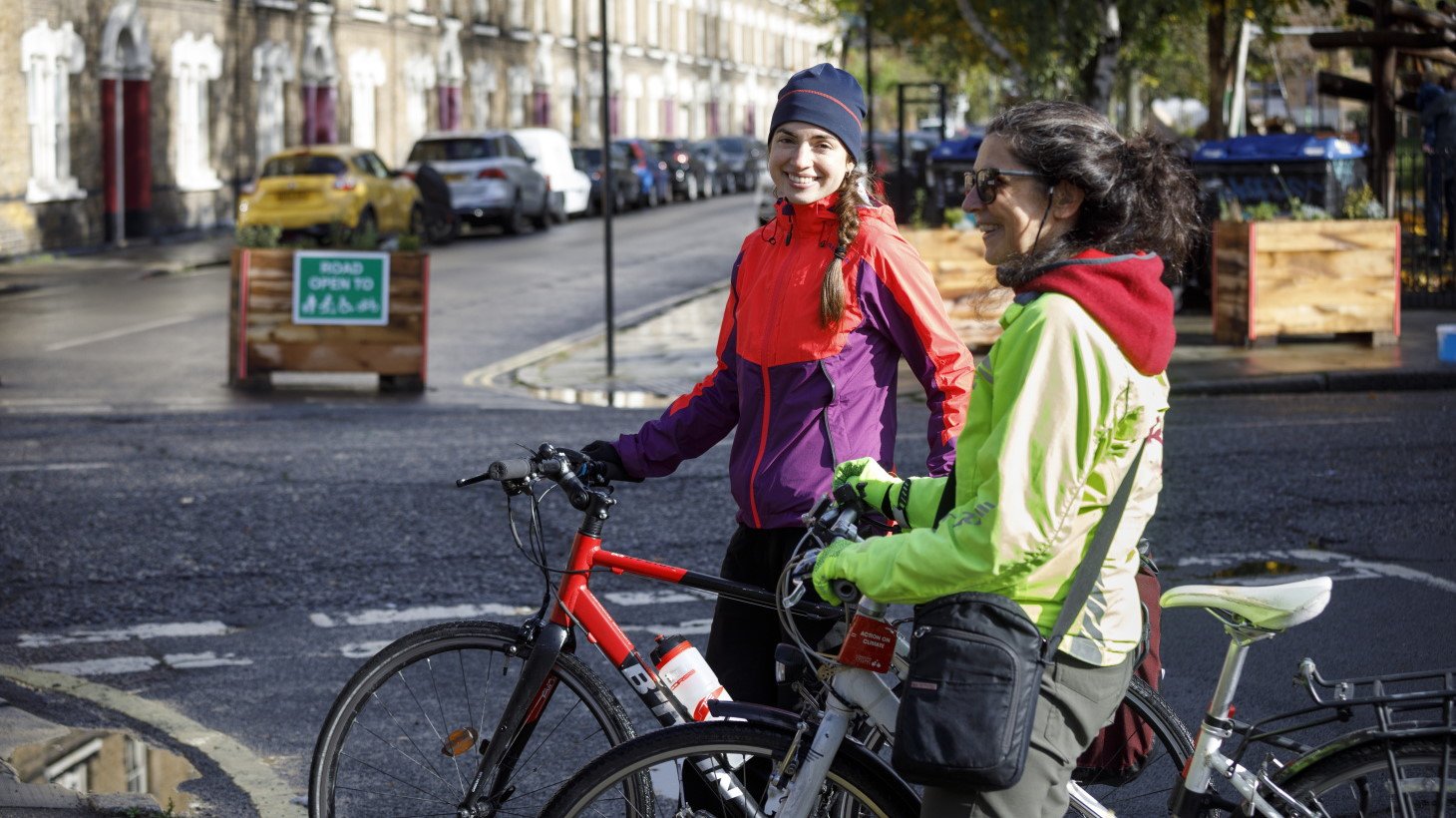Gear Change: One Year On – “There is now clear evidence that these schemes work and are popular”
No. 10 issues bold instructions to local councils to implement low traffic neighbourhoods, protected cycle lanes and school streets – and keep them

The Department for Transport has just released its ‘Gear Change: One Year On’ publication, following up on its ‘Gear Change: A bold vision for cycling and walking’ publication in July last year.
The document demonstrates the Government’s enthusiastic commitment to active travel improvement across the country, backed up with a dedicated Active Travel Fund.
In the PM’s foreword, Johnson sends a strong message to local councils:
“I know many people think that cycling and walking schemes simply increase car traffic on other roads. But there is now increasing evidence that they do not. We sometimes think of traffic as like water: if you block a stream in one place, it will find the next easiest way. Of course some journeys by car are essential, but traffic is not a force of nature. It is a product of people’s choices. If you make it easier and safer to walk and cycle, more people choose to walk and cycle instead of driving, and the traffic falls overall.
“I support councils, of all parties, which are trying to promote cycling and bus use. And if you are going to oppose these schemes, you must tell us what your alternative is, because trying to squeeze more cars and delivery vans on the same roads and hoping for the best is not going to work.
“And as the benefits of schemes increase over time, what opposition there is falls further. That is why schemes must be in place long enough for their benefits and disbenefits to be properly evidenced.”
Gear Change: One Year On is a hugely encouraging publication, setting out the evidence and need for active travel schemes and a clear mandate to local councils to get on with implementing high-quality active travel schemes including low traffic neighbourhoods, cycle lanes and school streets.
A warning to councils that don’t take active travel seriously
The document confirms there is now clear evidence that low traffic neighbourhoods, cycle lanes and school streets work and are popular.
It also contains a stark warning to councils which do not take active travel seriously, as evidenced by removing active travel schemes prematurely or not installing them in the first place:
“…an authority’s performance on active travel will help determine the wider funding allocations it receives, not just on active travel.”
Highlighting the human suffering caused by poor road safety
There is a sombre reminder of the human suffering underlining the desperate need to improve road safety in the UK by implementing active travel schemes:
“…over the last decade around 1,800 people have died every year when using our roads and over 25,000 a year have experienced serious, and often life changing, injuries…”
Pavement parking
The Government also states its intention to act on pavement parking, recognising the serious problems this causes for pedestrians, particularly people with mobility or sight impairments, as well as those with prams or pushchairs. It reports that the Government’s public consultation on pavement parking last year received over 15,000 responses and the Government intends to publish its response to the consultation later in the 2021.
Low traffic neighbourhoods: the evidence so far
This section points out that the concept of LTNs has been widespread in the UK for decades, with an estimated 25,000 LTNs existing across the country before the pandemic.
It also sets out some LTN myth-busting data:
Data collected so far regarding both the longer-established and recent LTN schemes shows significant reductions in traffic and significant increases in cycling and walking within the LTNs,
“But it also shows that a common claim about the LTNs – that they simply displace traffic to other roads – is in most cases not happening. Sometimes it did happen at the beginning, as travel patterns adjusted. But now the schemes have been in place for longer, councils are also reporting reductions in traffic on most (though not yet all) of the roads around the LTNs.”
Furthermore,
“Using years of data and more than 100,000 emergency callouts, academic research found that they do not increase emergency service response times – echoing statements made by the emergency services themselves about the post-pandemic LTN schemes.
“Indeed, they benefit public safety. New research shows that the pandemic LTN schemes have halved road injuries in their areas, compared with no reductions over the same period in non-LTN areas.
“Other research has shown that LTNs reduce street crime, increasing safety by putting more pedestrians and cyclists on the streets.
“And they are socially inclusive: in London, people in areas of higher deprivation were 2.7 times more likely to live in a 2020 LTN compared to those in the least deprived quarter of the population.”
It also explains how LTNs help to reduce traffic overall – both within and outside LTN borders:
“LTNs work because the people living in them, several thousand in each area, change their travel behaviour – taking fewer short local journeys by car and walking or cycling more. This takes local traffic away from the surrounding roads too. On those roads, the reduction in these local car journeys appears, in most though not in all cases, to outweigh any increase caused by the diversion of longer-distance car journeys by people passing through.”
“But changes in travel behaviour don’t happen overnight. We are noticing that the longer a scheme is in place, the greater its effect, on both the LTN and the surrounding roads. This is why we are clear that schemes must be given enough time to prove – or disprove – themselves.”
Public opinion and consultation on active travel schemes
The document makes some interesting observations and issues sensible directions for local councils regarding public opinion and consultation:
“…the government’s own polling and surveys, show consistent public support for the measures on cycling and walking we and councils have taken.”
“Contrary to claims of a ‘culture war,’ most people do not feel strongly about these schemes. The majority of both support and opposition is “tend to support” or “tend to oppose.” There are often significant numbers of people who, when asked, neither support nor oppose schemes. Only a very small minority express strong opposition, typically between 7 and 15 per cent of overall respondents.”
“There appears, however, to be a gap between real and perceived public opinion on this subject. One poll showed people believe that there is more opposition to these schemes than there actually is: that even though respondents themselves supported them, they believed that the public as a whole did not.”
“It is therefore important that consultation captures a genuinely representative picture of local views. That means listening to all, including the quieter and less vocal, not simply the most passionate; it is intended to inform decisions that members and officers make on these schemes, not to substitute for that decision making; and the consultation materials must include proper evidence and information about the effects of the proposals.”
“While schemes will usually have majority support, no scheme (or indeed almost any meaningful policy of any kind) will ever have unanimous support. Some councils appear to be searching for a formula which can make meaningful cycling and walking schemes acceptable to everyone, but this does not exist. We are clear that councils must not expect or require universal support and must avoid allowing any group to exercise a veto.”
Related documents/guidance
The Govt has also updated its Traffic Management Act 2004: network management to support recovery from COVID-19 statutory guidance for local councils in line with the Gear Change content, particularly around carrying out consultation.
It also launched its Local Transport Note 1/20 Cycle infrastructure design (LTN 1/20) last year setting out the Government’s detailed design guidance requiring much higher standards for cycling schemes, accompanying the original Gear Change: A bold vision for cycling and walking document.
Further reading on the evidence around LTNs


